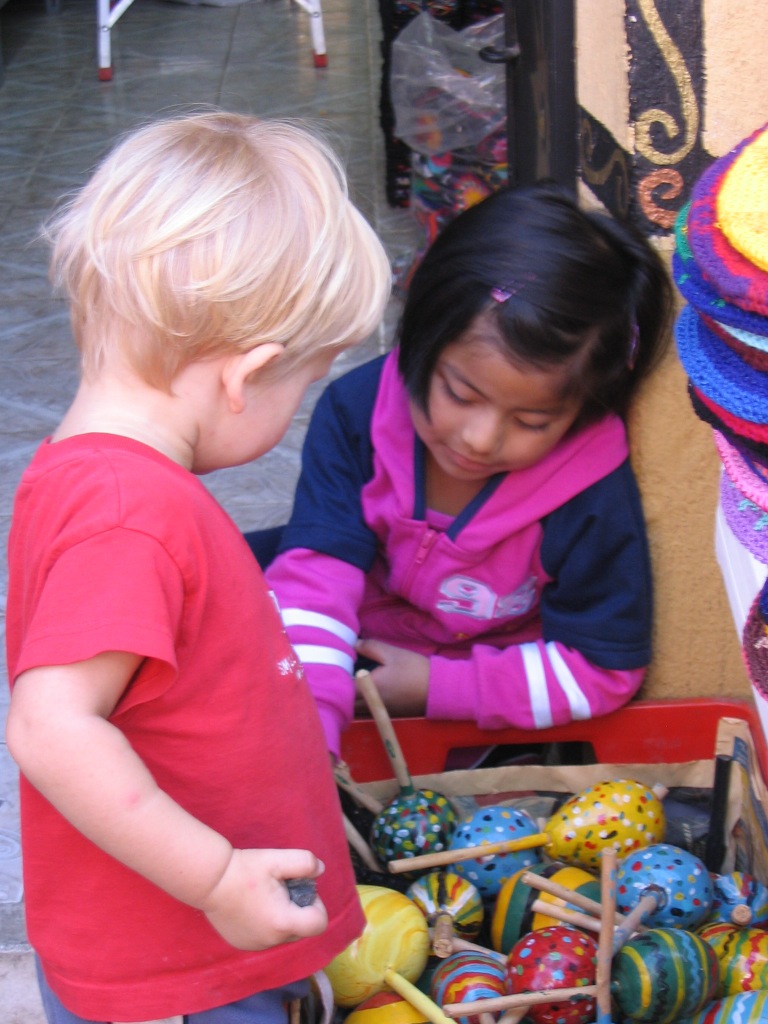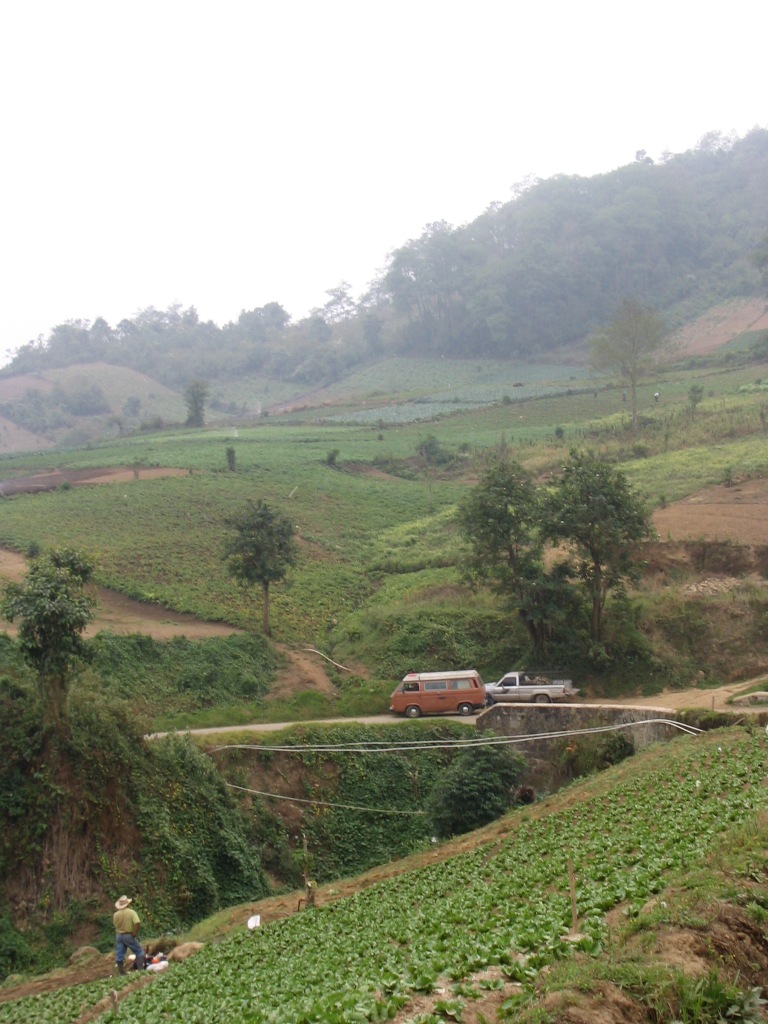Tourists on the Yucatan Peninsula
April 9th, 2007After Palenque we spent a few nights in Chetumal (on the Caribbean coast just north of the Belize border) doing laundry and stocking up on supplies. Our next stop was Mahahual. This town is on the coast of the Yucatan and used to be a lazy fishing town. Now Monday – Friday it is a stop for drunken American cruise ship travelers. Several years ago someone built a dock in this town of 500 inhabitants and during the week they have 2 or 3 cruise ships that dock there and shuttle between 4000 and 5000 of its passengers into town to look at the locals, ride ATV bikes around town, rent bicycles and get drunk. They conveniently built the dock within a short taxi ride from the city and there were taxis racing back and forth shuttling all-inclusive, bracelet-wearing Americans back and forth from the bars to the cruise ship. We got there at the height of their Friday afternoon binge. Matthias walked into one place, pushed his way through the falling down drunk Americans to ask if we could park our camper in their parking lot for a night. Smelling the gringo dollar he wanted a whopping 300 pesos for us all – 30 dollars for us to park there for the night. When I walked up and asked the DJs where we could camp, they fluttered their eyelids and offered me a free spot on the beach. We just kept going.
The other half of the town is just past the gluttonous cruise ship tourists that hardly know they are in Mexico. It really is a lazy fishing town, even when the cruise ships are docked. We found a great spot to camp on the beach, met a bunch of other travelers and had a great evening.
After that we headed north along the coast past Tulum to a town called Xpu-Ha where we stopped at a great campsite we had heard about from other travelers. It was way tranquillo and right on the water. The beach was perfect white sand with clear blue waters. We ended up staying there more than a week. We planned on staying only a couple of days, but every day we got up and asked ourselves if we really wanted to pack up and move on. Every day the answer was “No!” Originally we had planned on moving to the camping spot in Cancun before our nephew arrived, but it was such a great spot that we just never left. Eventually we just drove up to Cancun to pick him up, and drove straight back to Xpu-Ha. One of the best things about going on a trip like this – you have time. We can just stay in a place if we like it or else we just keep moving.
On the beach one day we met a woman from Cleveland (Laurie), who we ended up seeing quite a bit during the next week. She was traveling with her husband (a heart surgeon) and two kids (ages 13 and eight). They flew down to a beautiful resort for one week where all food and drinks were included. They smuggled us into their hotel room one evening and we took turns making margarita runs while the kids where raiding the mini-bar of all the juice boxes and watching TV for the first time in weeks. Laurie was really spunky and she seemed to meet and introduce us to all the interesting people at the resort (including one of the members of the Mekons). She also didn’t have a problem leaving her $1000/day resort to hang out at our $10/day campsite, and she even brought us a bucket of beers when she would stop by. How cool was that?
Our list keeps growing of the different type of travelers we have met: Vanagon drivers, backpackers, cruise-shippers, resort bunnies, RV-ers, motorcyclists and hitch-hikers.




